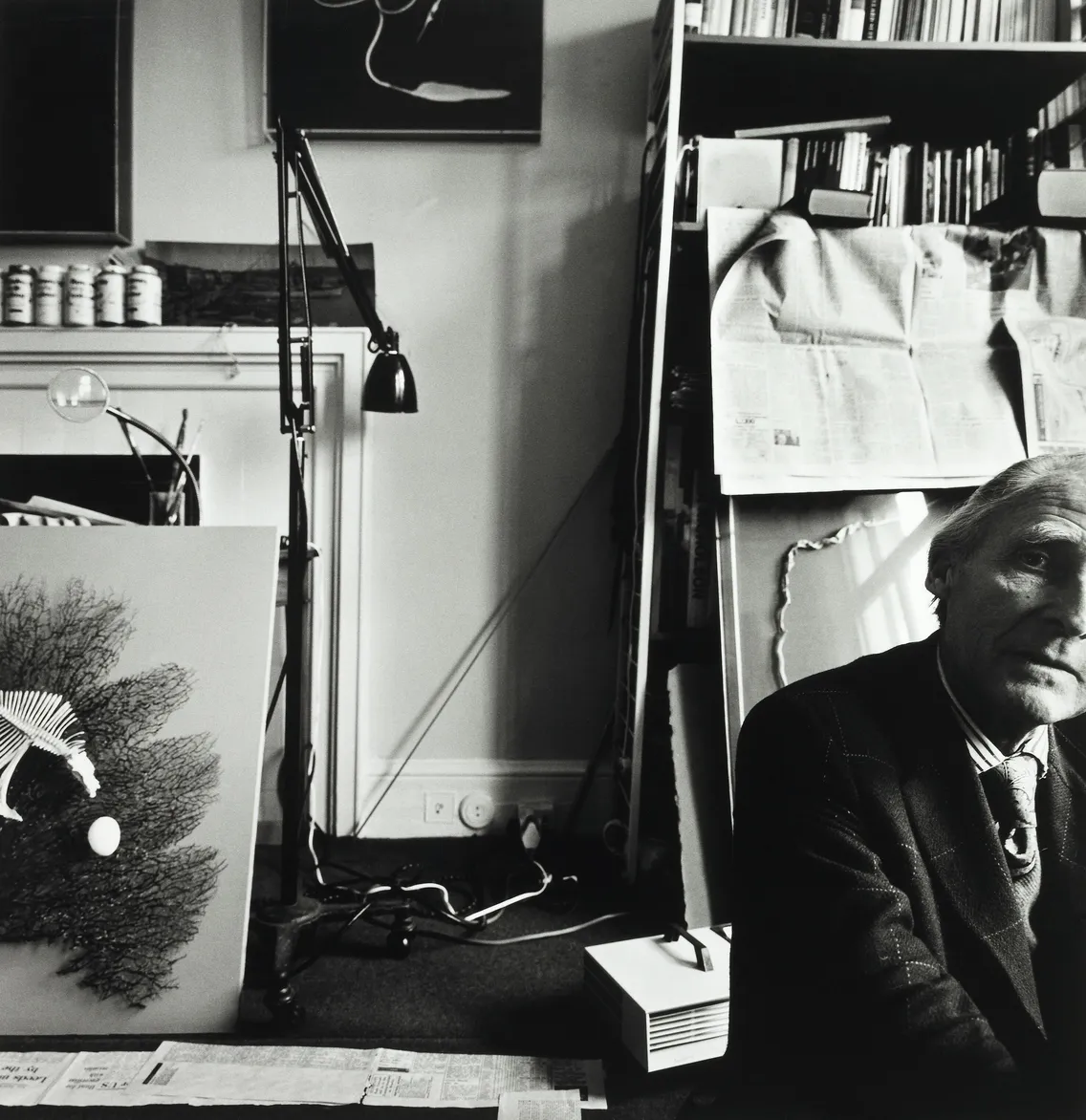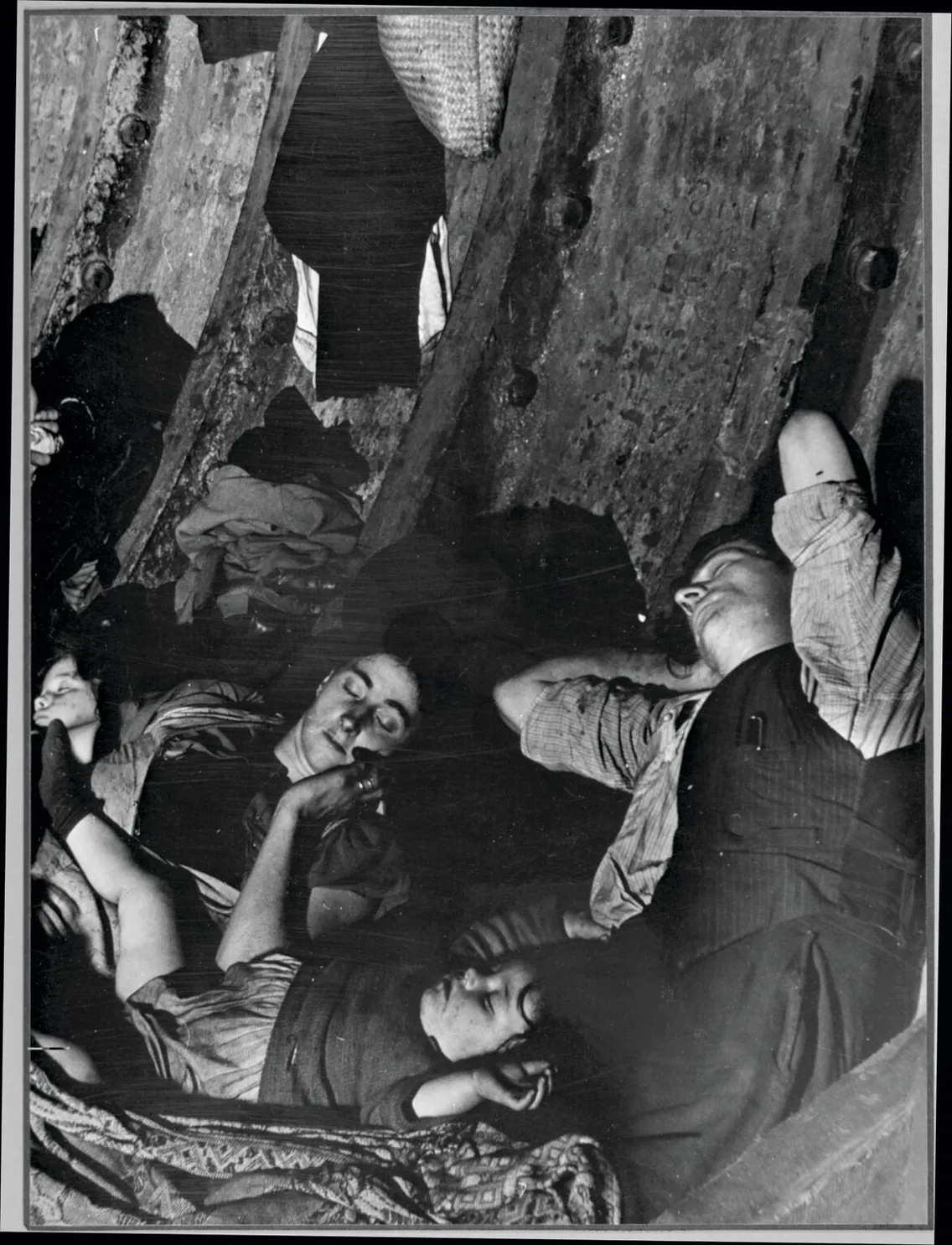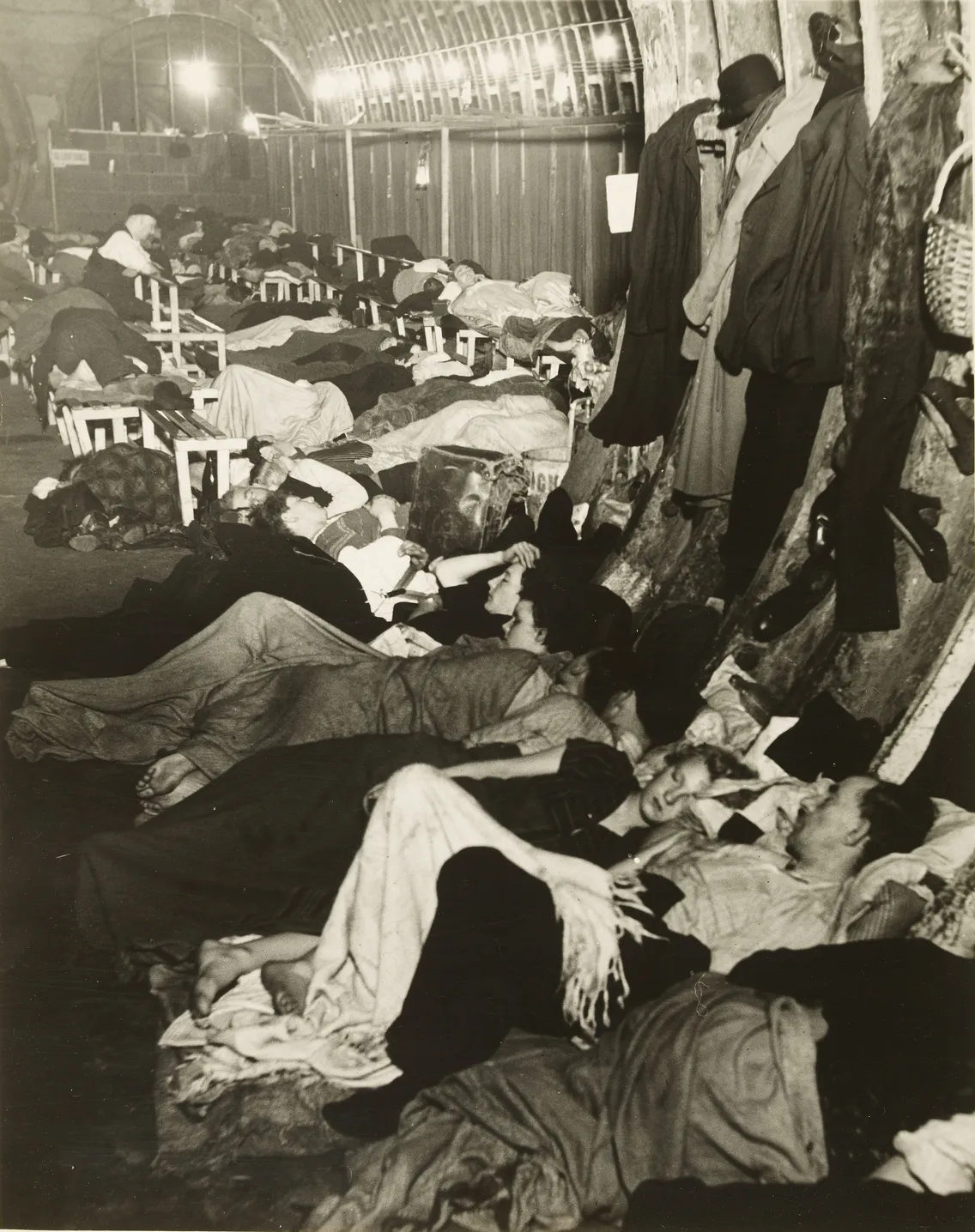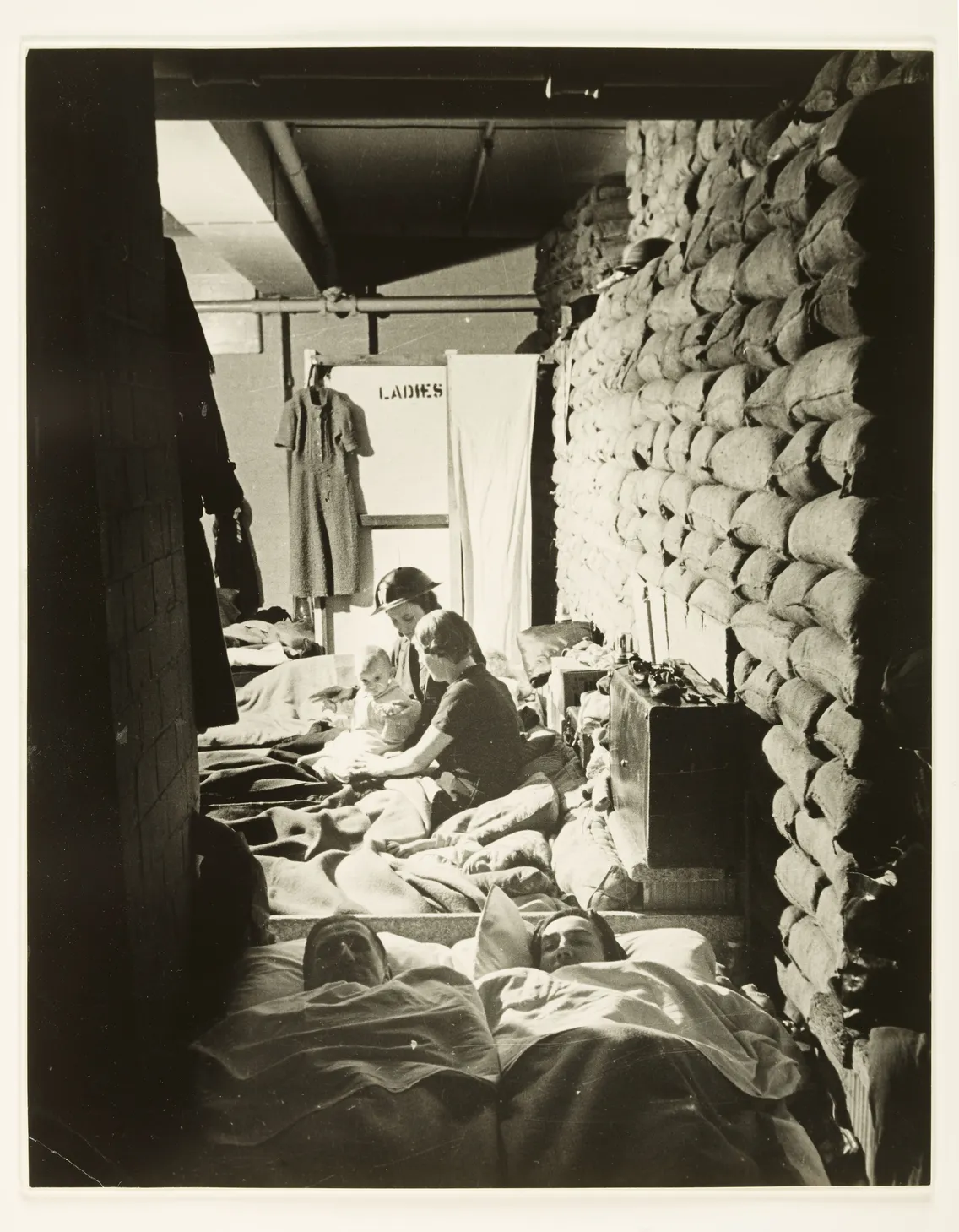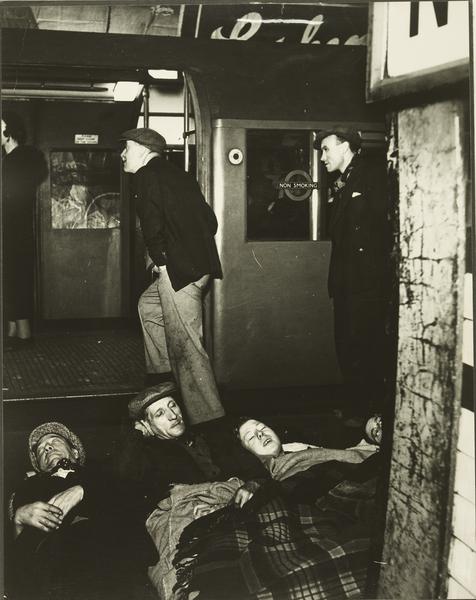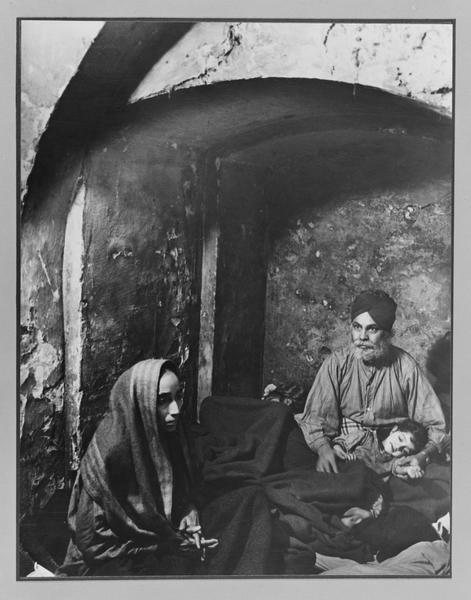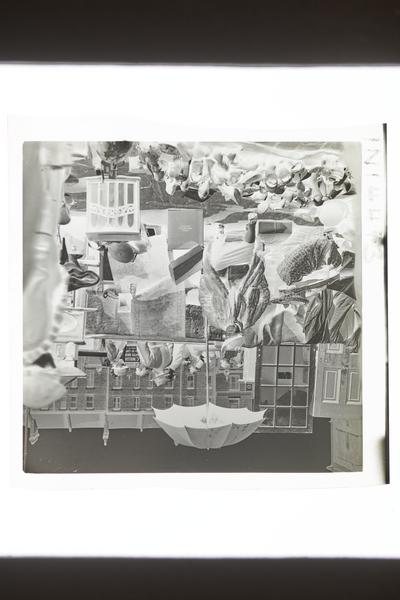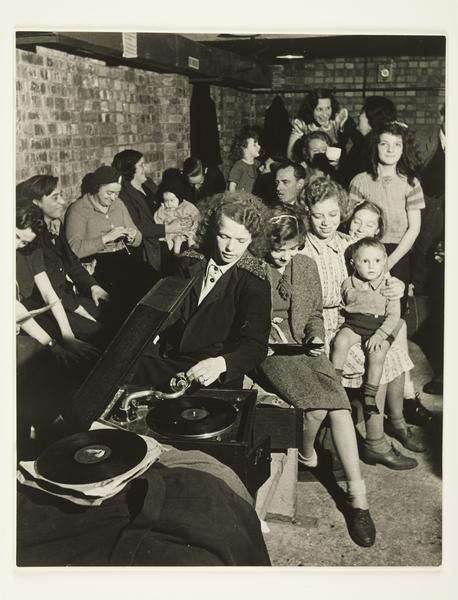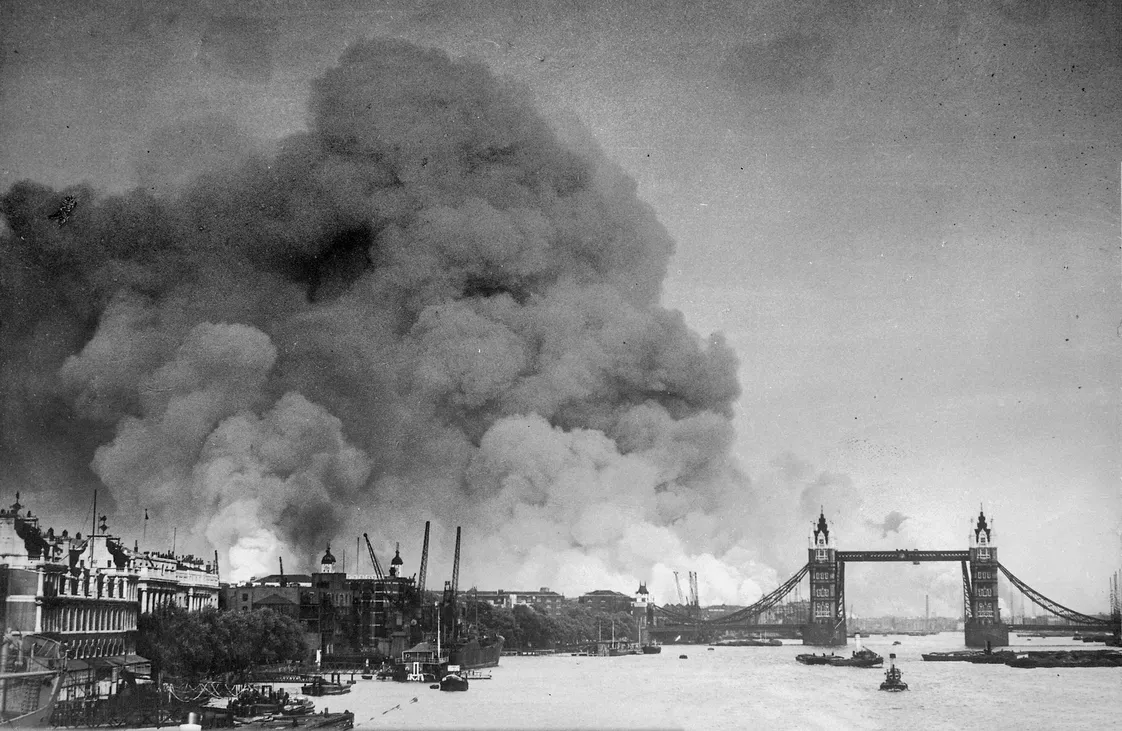The vivid photography of Bill Brandt
One of the most celebrated photographers of the 20th century, Bill Brandt masterfully explored the human experience in his varied body of work.
1904–1983
An artist with an eye for the real and surreal
Bill Brandt is well known for his realist photography that captured the stark social contrasts of life in Britain.
While he was born in Germany in 1904 to a wealthy banking family, he settled in Belsize Park, north London, in 1934. Here, his documentary photography was a witness to radical social change – from the economic depression of the 1930s, through to the Blitz during the Second World War.
But influenced by artists like Henry Moore and Surrealism pioneer Man Ray, Brandt’s work – his later nude photography in particular – often had an abstract, uncanny beauty.

Brandt photographs Londoners sheltering in a draper's shop basement on Seven Sisters Road, north London.
Brandt’s early work
Brandt’s photography career began in a local portrait studio in Vienna. There, he took a portrait of the American poet Ezra Pound. It was probably Pound who introduced the young Brandt to Man Ray, the painter and experimental photographer who became a huge influence on his work. Brandt even worked as his assistant for three months in Paris.
“Brandt photographed the lives of Britain’s rich as well as its poor”
After moving to London, Brandt made good use of his well-to-do family’s connections to photograph the lives of Britain’s rich as well as its poor. His first book, The English at Home, placed striking (and sometimes staged) images of aristocrats and public schoolboys alongside those of domestic servants and East End children. His photographs of England’s industrial north charted the same realism of the hardships of life during the Great Depression.
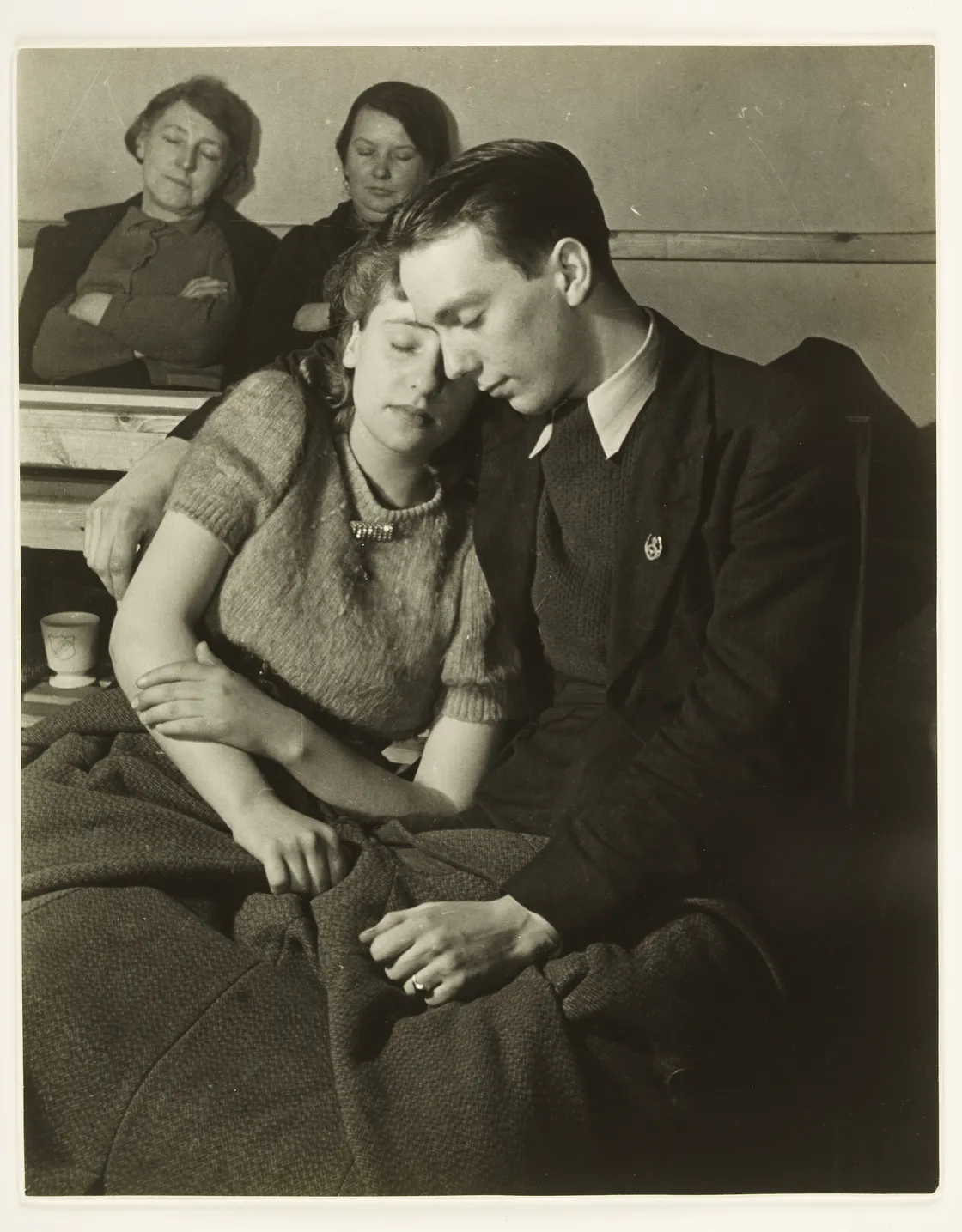
A couple sheltering in north London.
He also contributed to image-based magazines like Picture Post and Liliput. Their wide readerships provided an important platform for his work.
Brandt also explored night photography. A Night in London, published in 1938 under the looming threat of the Second World War, captured the city streets after dark, sometimes floodlit by transportable tungsten lights.
Photographs of wartime London
The war years were very productive for Brandt. He photographed London’s streets and buildings during the early blackouts, the moon one of his only sources of light. He was later commissioned by the government’s Ministry of Information to document Londoners sheltering from the Blitz, the targeted UK-wide bombing campaign by the German air force that lasted from 1940 to 1941.
“The long alley of intermingled bodies, with the hot, smelly air”
Bill Brandt, 1942
Brandt’s Blitz images depicted people seeking refuge in the London Underground as well as church crypts and shop basements.
Photographs in the collection evoke “the long alley of intermingled bodies, with the hot, smelly air and continual murmur of snores” that Brandt recalled in Lilliput magazine in 1942. A set of these prints was sent to Washington to persuade America to maintain support for Britain in the war.
Artist Henry Moore met Brandt while also creating drawings of sheltering civilians. Both their images of Underground shelters in Tube stations are symbolic of our understanding of the Home Front resistance. But can you see human vulnerability in Brandt’s photographs as well as resilience?
Brandt’s surrealist roots come through in these Blitz images. Through their compositions, stark lighting and distorted depths, Brandt is subtly showing the alienating and dangerous reality Londoners were living in.

Brandt captures two women sunbathing for a feature in Picture Post in 1948.
Brandt’s nudes and post-war acclaim
Brandt’s post-war photography brought him further acclaim. He began to take photographs of nudes using a former police camera with a wide angle lens he bought in 1945. You can see the influences of Man Ray and Moore in the images’ surreal and sculptural qualities.
He continued to work for illustrated magazines and created portraits of many famous people, such as the artist Francis Bacon and poet Robert Graves. Brandt’s later years were spent photographing, teaching and selecting works for exhibitions until his death in 1983.


